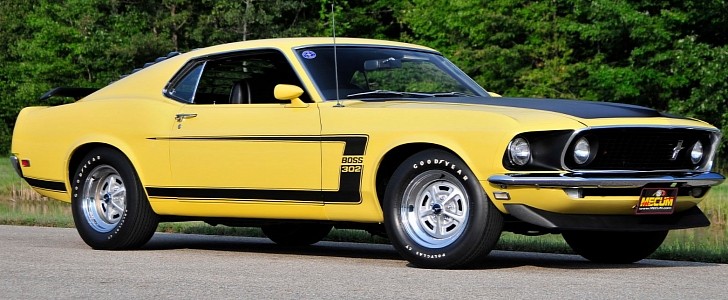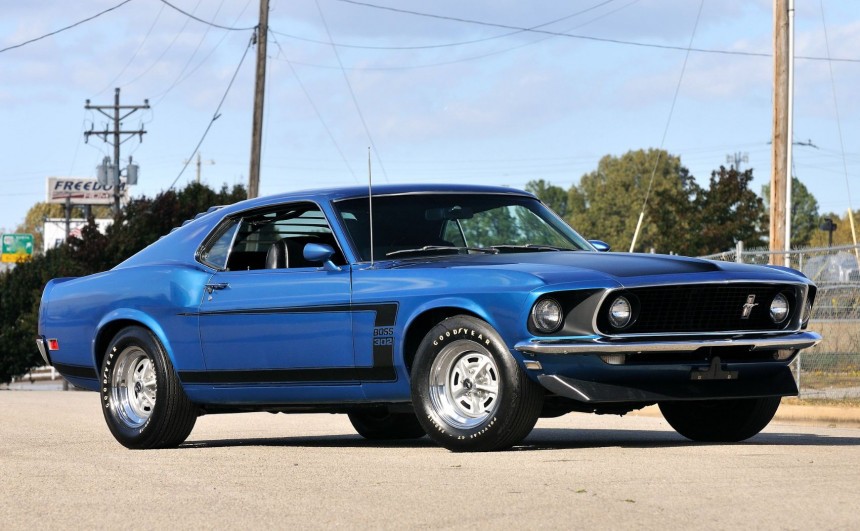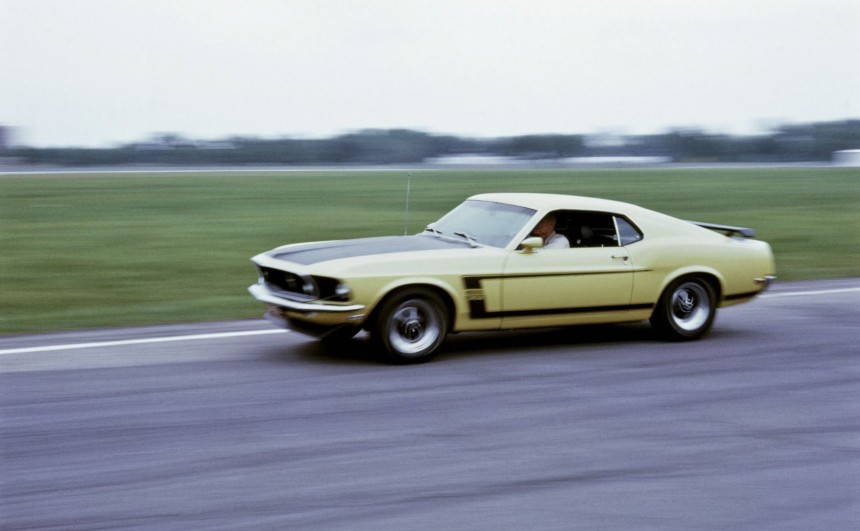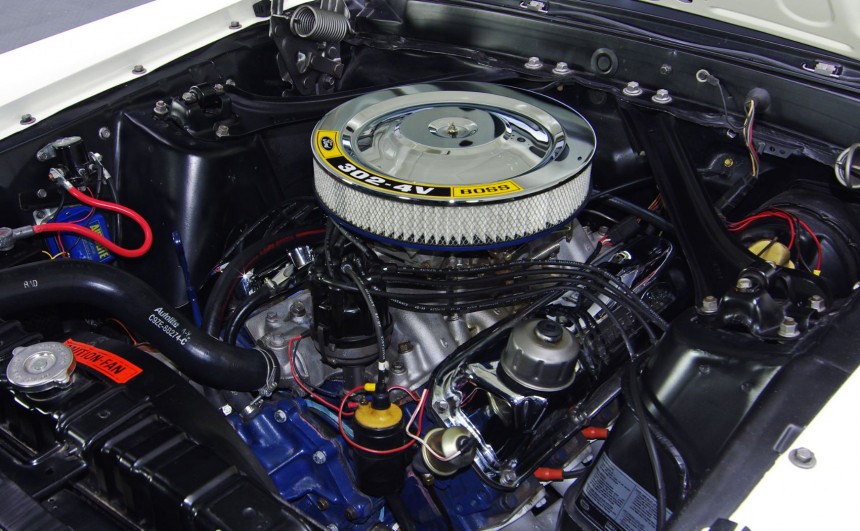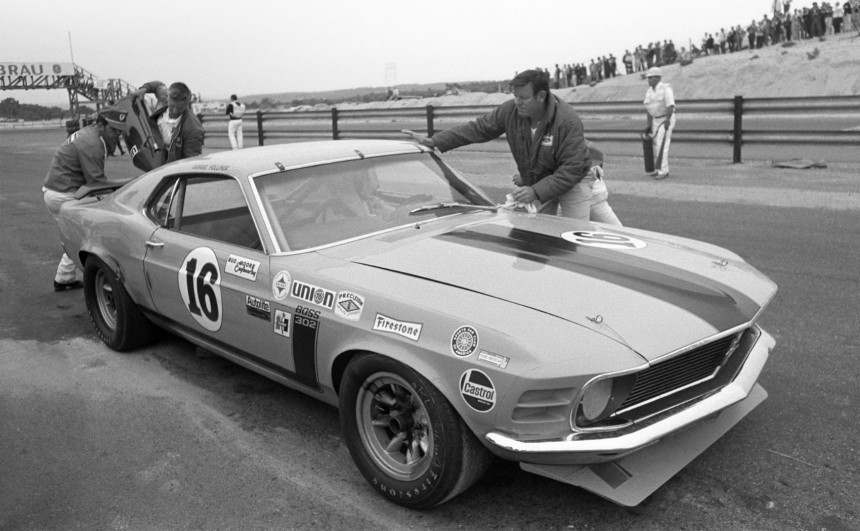Born and bred to bring glory for the Blue Oval in the Trans-Am championship once again, the Boss 302 was one of the coolest high-performance variants of the original Mustang. Let’s take a trip down memory lane and remember its fascinating story.
The Sports Car Club of America (SCCA) Trans-American championship's inaugural season began on March 25, 1966, right at the dawn of the pony car era. Back then, it consisted of two classes of modified factory cars differentiated by engine displacement: under and over 2.0 liters (102 cu in), with an upper limit of 5.0 liters (302 cu in). Drivers’ championships were not awarded until 1972, so the aim was to win a manufacturer’s title in either category.
At the end of the first season, Ford won the "over 2-liter" title racing Shelby American-modified Mustang hardtops. The competition gained a lot of attention and quickly became popular, leading to the addition of more races the following year. In the top class, Ford managed to defend its title against Dodge, Chevrolet, and sister brand Mercury.
However, in 1968 Chevy’s revised Z28 Camaro won ten out of the thirteen races, so the epic Mustang vs. Camaro rivalry began heating up, both on the racetracks and in dealerships.
Henry Ford II was desperate to snuff out the competition in all forms of racing and brought in former GM vice-president Bunkie Knudsen as the company’s new president in February. The latter quickly recruited famed Corvette C2 designer Larry Shinoda and tasked him with creating two homologation Mustangs: a 302-powered Z28 Camaro-killer for the Trans-Am championship and another one used to homologate the newly developed 429 engine for NASCAR use.
Since competition rules stated that manufacturers needed to race stock cars, Shinoda took a fastback model (later rebranded SportsRoof) and drew up two muscular, high-performance beasts. Legend has it that he chose the Boss moniker for both cars in honor of Knudsen.
For the 302, he enlarged the front wheel wells to accommodate larger tires and added a front splitter and a rear spoiler for improved aerodynamics. To top it off, he devised a unique decal package that featured black rocker panel striping and Boss 302 logos on each fender. The hood donned a matte black center plane for reduced glare, while the exterior headlight panels, rear spoiler, and deck lid were also blacked out. This package would flawlessly complement the available Bright Yellow, Calypso Coral, Wimbledon White, or Acapulco Blue paint jobs.
Ride and handling engineer Mat Donner calibrated the stock Competition Suspension Package, which included shock tower bracing, heavy-duty Gabriel shocks, and a front anti-roll bar. A quick-ratio (16:1) manual steering box was also installed, along with 11.3-inch (28.7-cm) brake rotors and floating front calipers.
Nevertheless, the highlight of this high-performance pony car was the bespoke 302 cu in (4.9-liter) engine.
The Tunnel Port 302 used in the competition was causing major problems, so the engineering team worked around the clock to develop a better powerplant. The heavily revised HiPo 289 block fitted with a forged steel crankshaft was kept, but the twin-port cylinder heads had to go.
One ingenious engineer named Bill Bar suggested that they use the canted-valve heads from the 351 Cleveland that Ford was developing at the time and the idea proved to be extremely good.
In stock form, the unit developed 290 hp and 290 lb-ft (393 Nm) of torque, resulting in a 0 to 60 mph (96 kph) time of 6.9 seconds. However, the race version fine-tuned by Kar Kraft was putting out well over 470 hp.
Ford was much more competitive with the new car in the 1969 Trans-Am season, but ultimately Chevrolet claimed the title again. With slight modifications, the Boss 302 driven by Parnelli Jones came out on top in 1970, winning six races and finishing second three times. To this day, that season is considered one of the best in the history of the competition since it was the only year when every Detroit pony car manufacturer competed.
In dealerships, the 302 lost the battle with the Z28 by a wide margin. According to 1969 sales figures, Chevy sold 20,302 units while Ford only released 1,628 Boss 302s into the wild. Although sales of pony cars dropped in 1970 and the debut of the second-generation Camaro was delayed for several months, the Z28 still outsold its rival by over 1,000 units.
Ford discontinued the Boss 302 for the 1971 model year and replaced it with a 351 version. That model would also be pulled out of the lineup a year later since sales of gas-guzzlers were dropping fast.
Although it only managed to win one of the two Trans-Am championships it competed in and never managed to outshine the Z28 in terms of sales, the Boss 302 was an innovative high-performance pony car that certainly deserves its place in the history books.
At the end of the first season, Ford won the "over 2-liter" title racing Shelby American-modified Mustang hardtops. The competition gained a lot of attention and quickly became popular, leading to the addition of more races the following year. In the top class, Ford managed to defend its title against Dodge, Chevrolet, and sister brand Mercury.
However, in 1968 Chevy’s revised Z28 Camaro won ten out of the thirteen races, so the epic Mustang vs. Camaro rivalry began heating up, both on the racetracks and in dealerships.
Henry Ford II was desperate to snuff out the competition in all forms of racing and brought in former GM vice-president Bunkie Knudsen as the company’s new president in February. The latter quickly recruited famed Corvette C2 designer Larry Shinoda and tasked him with creating two homologation Mustangs: a 302-powered Z28 Camaro-killer for the Trans-Am championship and another one used to homologate the newly developed 429 engine for NASCAR use.
For the 302, he enlarged the front wheel wells to accommodate larger tires and added a front splitter and a rear spoiler for improved aerodynamics. To top it off, he devised a unique decal package that featured black rocker panel striping and Boss 302 logos on each fender. The hood donned a matte black center plane for reduced glare, while the exterior headlight panels, rear spoiler, and deck lid were also blacked out. This package would flawlessly complement the available Bright Yellow, Calypso Coral, Wimbledon White, or Acapulco Blue paint jobs.
Ride and handling engineer Mat Donner calibrated the stock Competition Suspension Package, which included shock tower bracing, heavy-duty Gabriel shocks, and a front anti-roll bar. A quick-ratio (16:1) manual steering box was also installed, along with 11.3-inch (28.7-cm) brake rotors and floating front calipers.
The Tunnel Port 302 used in the competition was causing major problems, so the engineering team worked around the clock to develop a better powerplant. The heavily revised HiPo 289 block fitted with a forged steel crankshaft was kept, but the twin-port cylinder heads had to go.
One ingenious engineer named Bill Bar suggested that they use the canted-valve heads from the 351 Cleveland that Ford was developing at the time and the idea proved to be extremely good.
Ford was much more competitive with the new car in the 1969 Trans-Am season, but ultimately Chevrolet claimed the title again. With slight modifications, the Boss 302 driven by Parnelli Jones came out on top in 1970, winning six races and finishing second three times. To this day, that season is considered one of the best in the history of the competition since it was the only year when every Detroit pony car manufacturer competed.
Ford discontinued the Boss 302 for the 1971 model year and replaced it with a 351 version. That model would also be pulled out of the lineup a year later since sales of gas-guzzlers were dropping fast.
Although it only managed to win one of the two Trans-Am championships it competed in and never managed to outshine the Z28 in terms of sales, the Boss 302 was an innovative high-performance pony car that certainly deserves its place in the history books.
